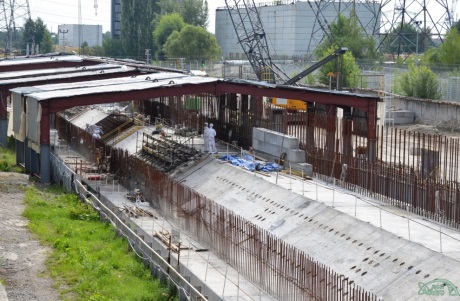Foundation for Chernobyl cover
18 August 2014
The last cubic metre of concrete needed for the foundation of the New Safe Confinement (NSC) at Chernobyl has been poured, State Specialised Enterprise Chernobyl NPP said on 15 August.
 |
| Foundation of the New Safe Containment last month (Image: Chernobyl NPP) |
The foundation is 506 meters in length and comprises 38,823 cubic metres of concrete, the state-run company said. Work on the foundation for the NSC was launched in August 2011, it said.
When completed, the NSC will prevent the release of contaminated material from the present shelter and at the same time protect the structure from external impacts such as extreme weather.
Construction of the NSC is being financed via the Chernobyl Shelter Fund, managed by the European Bank for Reconstruction and Development (EBRD) as mandated by the G7 and on behalf of the contributors to the fund. The contract for the unprecedented design and construction project was awarded to the Novarka consortium led by the French construction companies Bouygues and Vinci in 2007.
Confinement at the site started in late 2010 and, according to the current schedule, is expected to be completed by 2017, the EBRD has said. The first half of the arch was lifted to its complete height and moved it into a holding position in April. In total, the assembly will require six single lifting operations, each one adding a new segment and raising the whole structure accordingly. The first lifting took place in November 2012.
When both halves are complete, they will be slid over unit 4 and part of its turbine wall.
The NSC will eventually rise to a height of 110 metres, will be 165 metres long, have a span of 260 metres and a lifetime of a minimum of 100 years. The arch-shaped structure will weigh more than 30,000 tonnes. Its frame is a huge lattice construction of tubular steel members built on two longitudinal concrete beams.
The NSC will provide a safe working environment equipped with heavy duty cranes for the future dismantling of the shelter and waste management. It will be strong enough to withstand a tornado and its sophisticated ventilation system will minimise the risk of corrosion, ensuring that there is no need to replace the coating and expose workers to radiation during the structure's lifetime.
Researched and written
by World Nuclear News